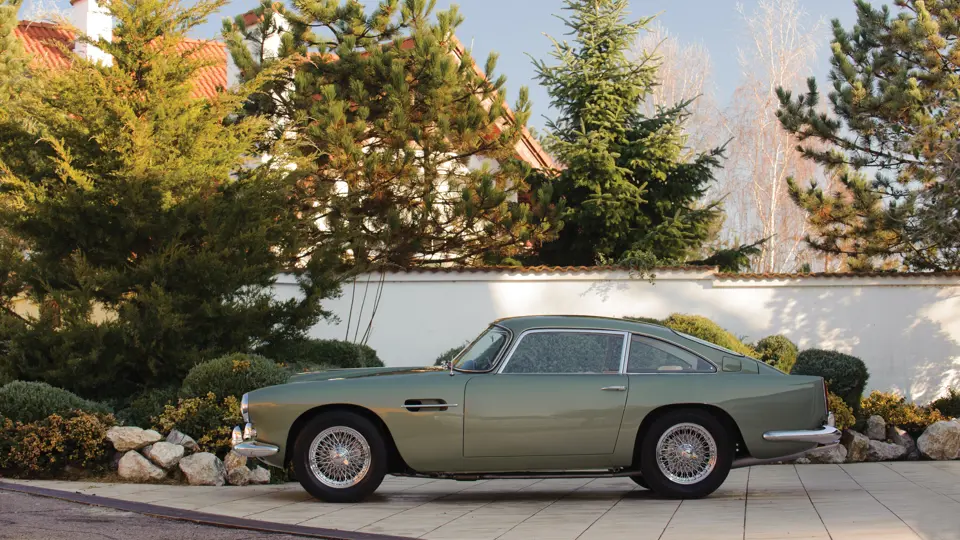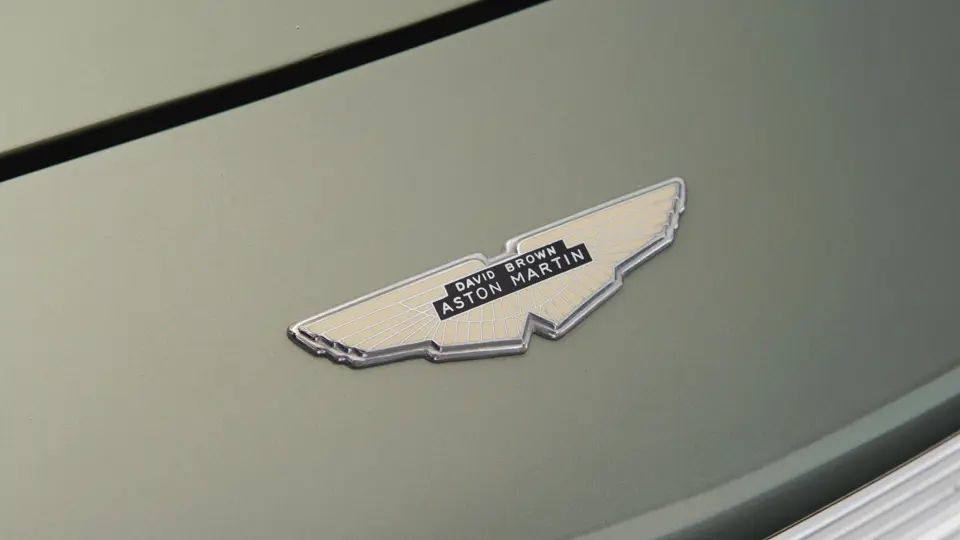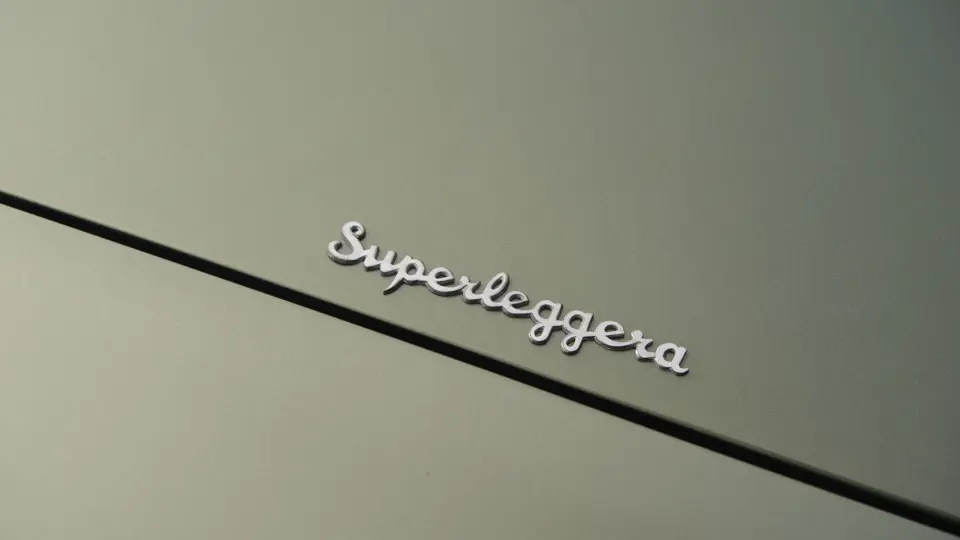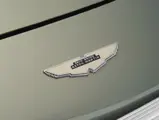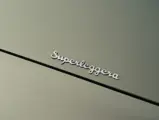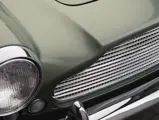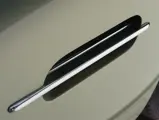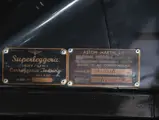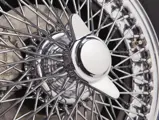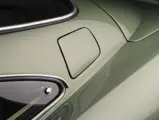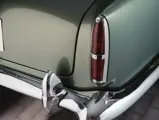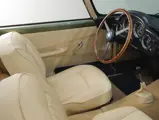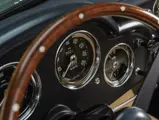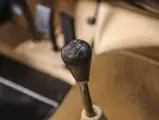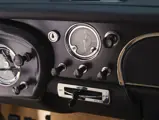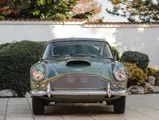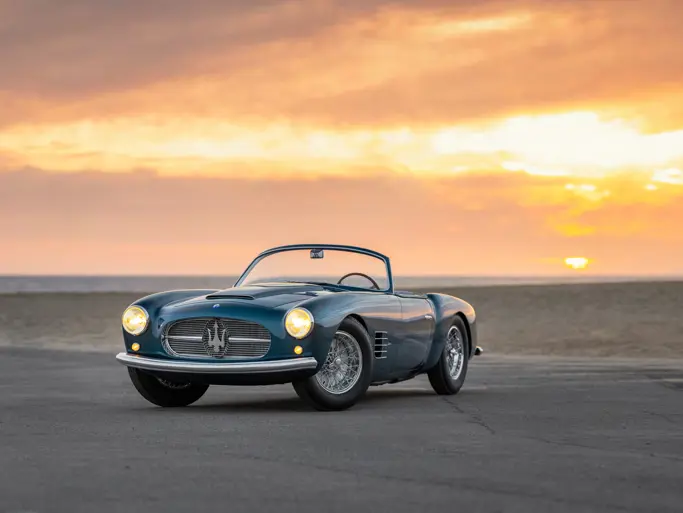
1960 Aston Martin DB4
{{lr.item.text}}
€448,000 EUR | Sold
{{bidding.lot.reserveStatusFormatted}}
- Factory left-hand-drive car; matching-numbers example
- Originally owned by American sportswoman Willametta Keck Day
- Freshly restored in authentic factory colours
- Accompanied by its original jack and workshop manual
- Conduite à gauche d'origine ; numéros concordants (matching numbers)
- Ancienne propriété de Willametta Keck Day, la sportive américaine
- Récemment restaurée avec des teintes usine authentiques
- Accompagnée de son cric et de son manuel d'atelier d'origine
240 bhp, 3,670 cc DOHC alloy inline six-cylinder engine with two HD/8 carburettors, four-speed manual transmission, independent front suspension with upper and lower control arms and coil springs, live rear axle with Watt linkage, trailing arms, and coil springs, and four-wheel disc brakes. Wheelbase: 2,489 mm
Moteur six-cylindres en ligne, 3 670 cm3, 240 ch, 2 ACT, deux carburateurs HD/8, boîte manuelle quatre rapports, suspension avant indépendante par doubles triangles et ressorts hélicoïdaux, essieu arrière rigide avec barre de Watt, bras tirés et ressorts hélicoïdaux, freins à disques sur les quatre roues. Empattement: 2 489 mm
It is easy to forget just how large a statement the Aston Martin DB4 made upon its introduction at the 1958 London Motor Show. In many ways, it was the car that told the world that the British motor industry was back, as this small British manufacturer was able to produce a wholly new, wholly modern grand tourer. Its rigid box-frame chassis, developed under Harold Beach, featured a coil-over A-arm front suspension with an anti-sway bar, as well as a live rear axle with trailing arms, proper Watts linkage, and, of course, coil springs. The coachwork was styled in Italy by Carrozzeria Touring, which used their patented Superleggera process to create a skeleton of small-diameter steel tubing to support the body panels that were made of light alloy. Yet, its sleek fastback lines were hammered out by Aston’s own highly skilled panel-beaters in Newport Pagnell.
At the heart of it all was the new DB4 engine, a rugged alloy, six-cylinder, twin-cam unit that was designed by a recently hired master engineer, Czech-born Tadek Marek. Marek’s name would become a legend to Aston enthusiasts, and this, his original creation for the company, would power a decade of DBs. The lightweight, alloy-cased, four-speed synchromesh gearbox was also an in-house design, one that was built by David Brown’s gear and machine tool division. Four-wheel disc brakes provided immediate stopping power, and they were considered innovative technology on production GTs of the day.
The original DB4 Astons were effortlessly modern and breezily international, and they hit the sweet spot between Crown and Continent. In its 3 October 1958 issue, Autocar explained, “When the products which are raced bear such a close resemblance to those which can be bought by the public, only the most biased can deny the value of racing in improving the breed. It is no surprise that the DB4 is based on an engine which first appeared in the DBR2 in some of last year’s races”.
CHASSIS NUMBER DB4/398/L
The DB4 offered here is documented by its Aston Martin Dorset build sheet as having been originally finished in Peony, with trimming in black Connolly leather upholstery, fully chromed road wheels, whitewall tyres, and one wing mirror on the driver’s side, as well as a Motorola radio. It was originally delivered to Willametta Keck Day, an heirless to the vast Superior Oil Company fortune which had been established by her father, as well as a well-known California sportswoman of her day, whose stable the Aston shared with a racing Ferrari. Amusingly, the Dorset paperwork recounts that the fastidious Ms Day returned the car to her dealer several times shortly after purchasing it, having flaws to the paintwork repaired and “stiffness” in one door rectified.
The car was sold in 1980 to a gentleman who, after only three years of ownership, permanently parked it in his garage. It was acquired after 30 years in the garage by its present European owner, and in his ownership, it has been carefully restored to the highest of standards. The paint was carefully stripped (with water) in Italy, and the original aluminium bodywork was cut off the frame and repaired with new metal where necessary, to eliminate corrosion along the lower panels. Under the bonnet the original engine can be found.
New colours were chosen from original factory materials, including the Light Metallic Green (1338) finish and White Gold (VM 3323) upholstery. The wheels were replaced with new ones, but the original chrome rims that were specified by Ms Day will be supplied with the car.
This freshly completed DB4 combines the desirable left-hand-drive layout with its original engine, exciting colours, and fascinating ownership, making it certainly one of the most outstanding examples available today.
Il est facile d'oublier l'impact produit par l'Aston Martin DB4, lors de sa présentation au Salon de Londres 1958. D'une certaine façon cette voiture annonçait haut et fort que l'industrie anglaise était de retour. Un petit constructeur britannique avait donné naissance à une voiture de Grand Tourisme complètement nouvelle et parfaitement moderne. Son châssis caissonné rigide, mis au point par Harold Beach, comportait une suspension avant à triangles, ressorts hélicoïdaux et barre antiroulis, et à l'arrière un essieu rigide avec barre de Watt, bras tirés et, bien sûr, ressorts hélicoïdaux. L'élégante carrosserie avait été dessinée en Italie, par la Carrozzeria Touring qui appliquait son procédé Superleggera breveté constitué d'un squelette de tubes d'acier de faible diamètre sur lequel s'appuyait des panneaux de carrosserie en alliage léger. Mais ces derniers étaient façonnés par les artisans hautement qualifiés d'Aston Martin à Newport Pagnell.
Le cœur de la voiture était constitué du tout nouveau moteur DB4, un robuste six-cylindres double arbre conçu par un ingénieur d'origine tchèque embauché peu de temps auparavant, Tadek Marek. Son nom allait devenir une véritable légende auprès des passionnés d'Aston Martin, car son moteur allait équiper toute une famille de voitures fantastiques. La boîte de vitesses dont le carter était en alliage léger, à quatre rapports entièrement synchronisée, était entièrement conçue par Aston Martin et les pièces en étaient usinées dans les ateliers mécaniques de David Brown. Très efficaces, les freins à disque sur les quatre roues étaient à l'époque considérés comme une technologie innovante.
Les Aston Martin DB4 étaient à la fois modernes et complètement internationales, leur réputation dépassant rapidement les frontières anglaises. Dans son numéro du 3 octobre 1958, le magazine Autocar expliquait : « Quand les automobiles utilisées en compétition affichent une ressemblance aussi étroite avec celles qui peuvent être achetées par le public, alors personne ne peut nier la valeur de la compétition pour améliorer l'espèce. Il n'est pas surprenant que la DB4 s'appuie sur un moteur qui est apparu pour la première fois sur la DB2, dans quelques-unes des épreuves de l'an dernier ».
CHASSIS N° DB4/398/L
La DB4 proposée ici est décrite sur sa feuille de fabrication Aston Martin Dorset comme étant à l'origine de teinte Peony (pivoine) avec sellerie en cuir Connolly noir, équipée de jantes complètement chromées, de pneus à flancs blancs, d'un rétroviseur extérieur côté conducteur, ainsi que d'un autoradio Motorola. Elle était livrée neuve à la Californienne Willametta Keck Day, héritière de la fortune de la Superior Oil Company établie par son père. Cette jeune femme était aussi une sportive bien connue à l'époque, et son Aston partageait son garage avec une Ferrari de compétition. Il est amusant de constater que les archives Aston relatent que l'exigeante Mme Day avait ramené la voiture à plusieurs reprises chez son agent Aston, peu après son achat, pour rectifier des défauts de peinture et pour s'occuper d'une porte au maniement « trop dur ».
Cette Aston Martin DB4 était vendue en 1980 à un gentleman qui ne la parquait dans son garage que trois ans plus tard. Après y avoir passé 30 ans, elle était achetée par son actuel propriétaire européen, qui l'a faite restaurer selon les standards les plus élevés. La peinture a été soigneusement décapée (à l'eau) en Italie, les panneaux d'aluminium d'origine étant démontés de leur structure et réparés avec de nouvelles pièces de métal chaque fois que c'était nécessaire, de façon à éliminer la corrosion sur les parties les plus basses. Le capot abrite le moteur d'origine de la voiture.
De nouvelles teintes ont été choisies sur les nuanciers d'usine d'époque, pour se porter sur une couleur Light Metallic Green (1338) avec sellerie White Gold (VM 3323). Les jantes ont été remplacées par des neuves, mais les roues chromées d'origine, choisies par Mme Day, seront livrées avec la voiture.
Combinant la désirable configuration conduite à gauche avec un moteur d'origine, des teintes séduisantes et une appartenance fascinante, cette DB4 récemment restaurée fait certainement partie des plus beaux exemplaires actuellement disponibles sur le marché.
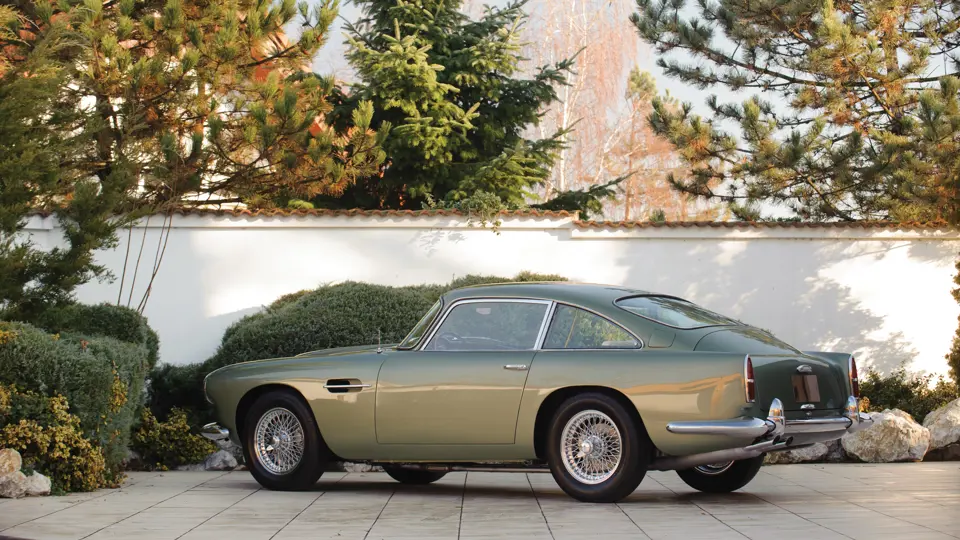
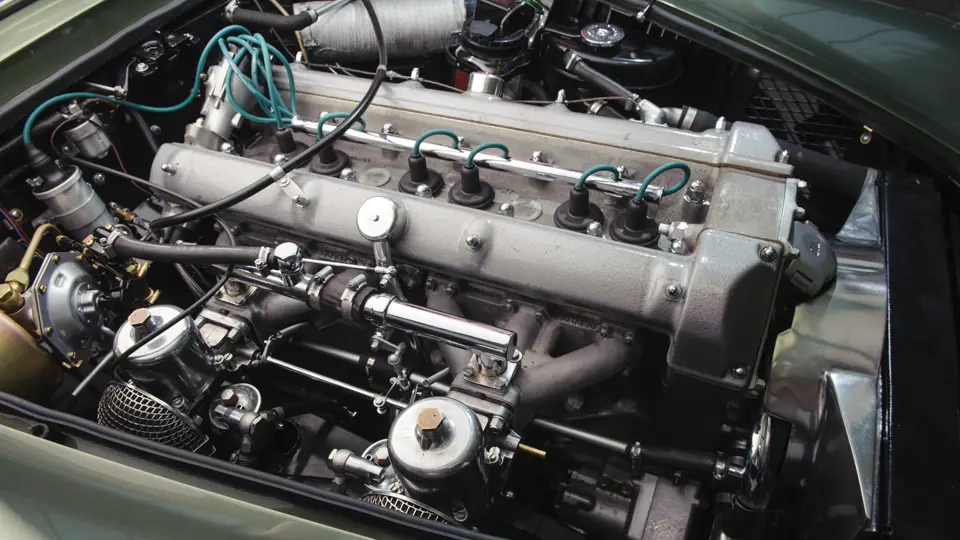


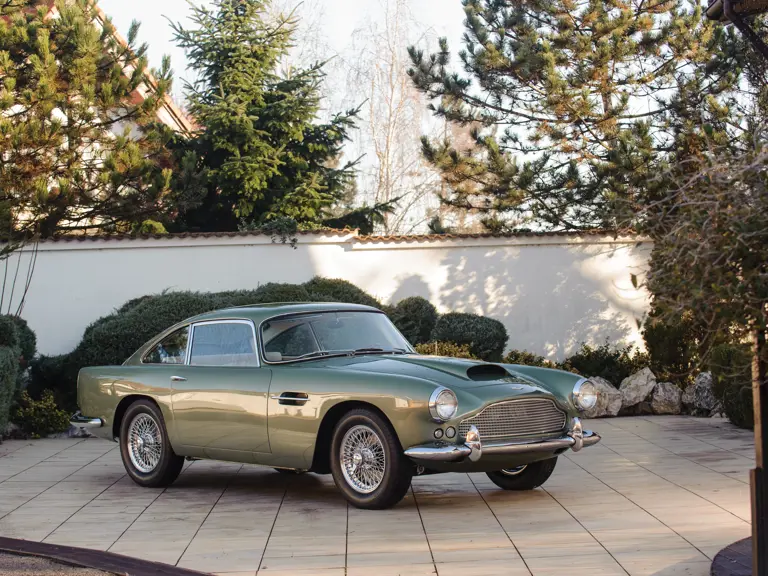

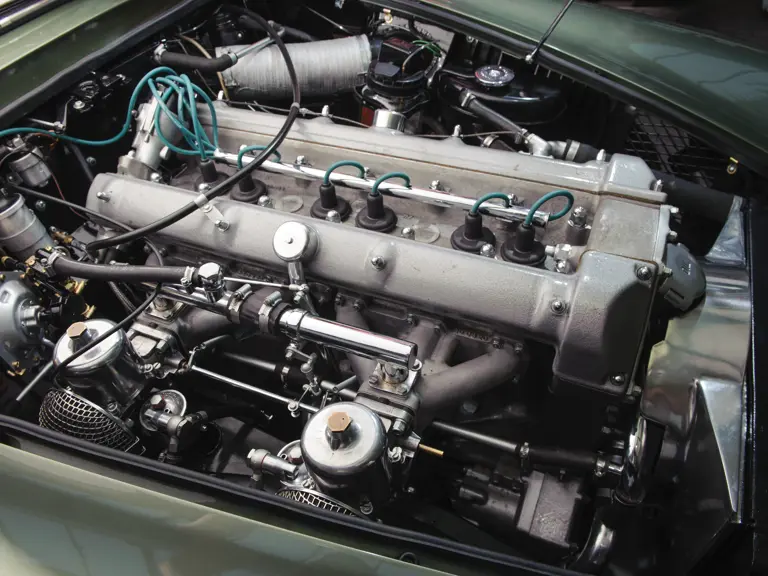
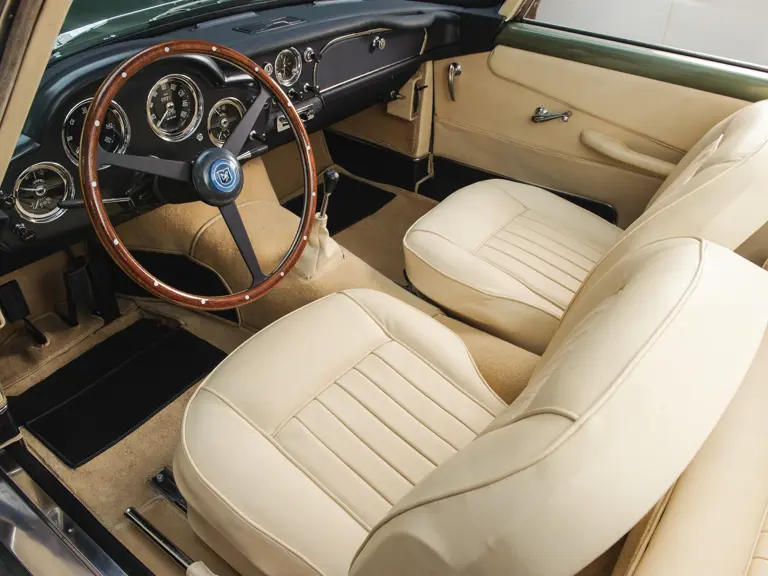

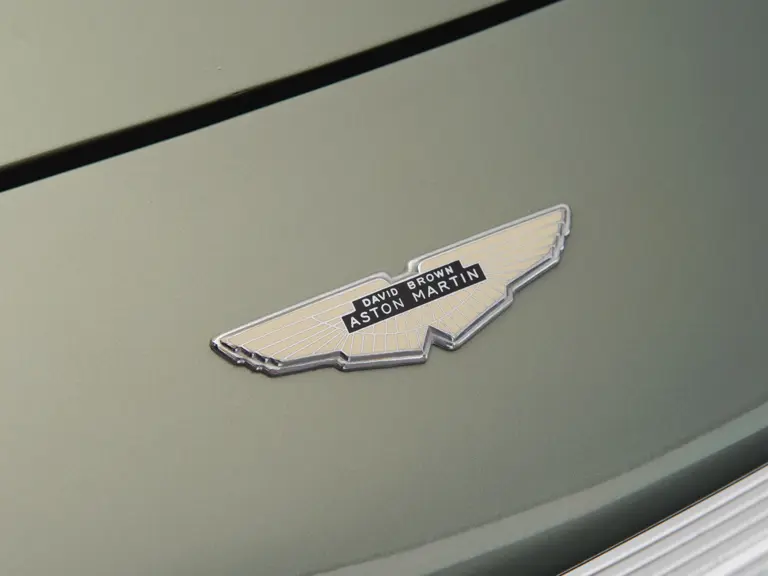
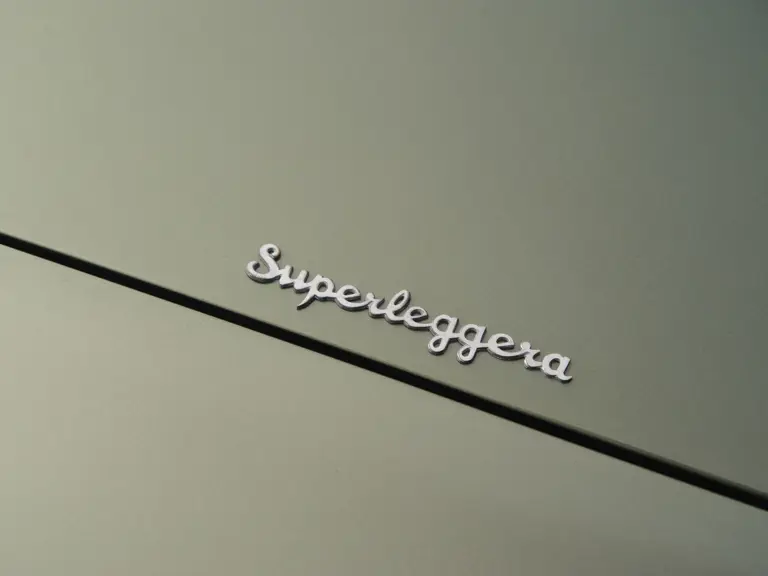

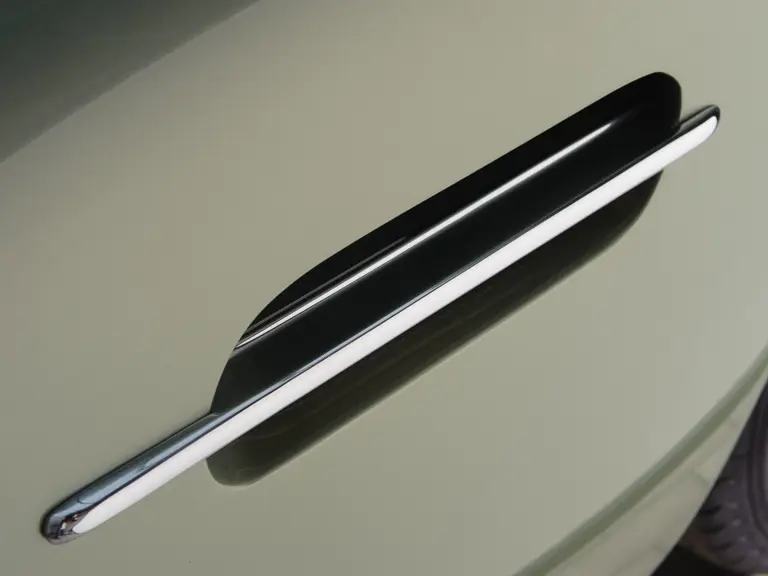
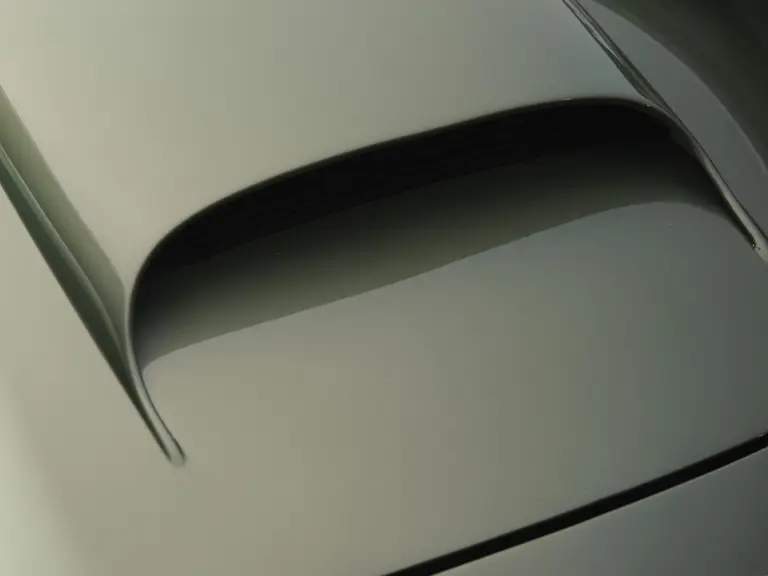
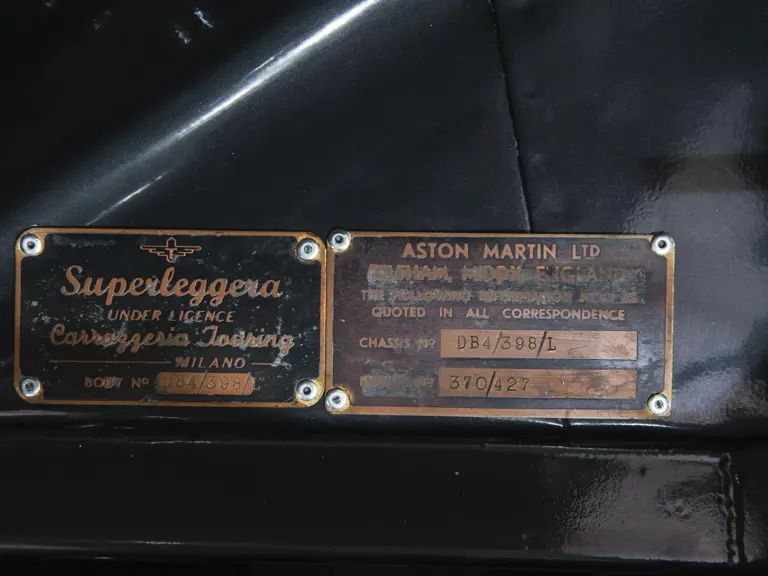
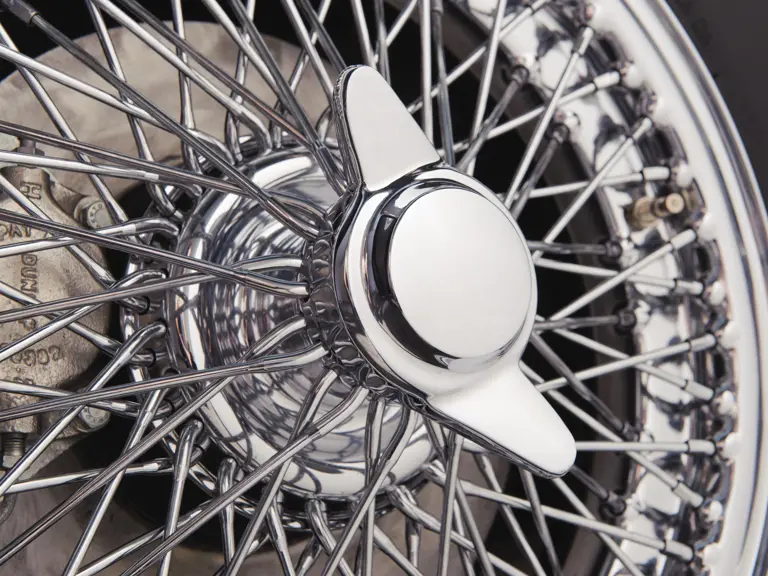
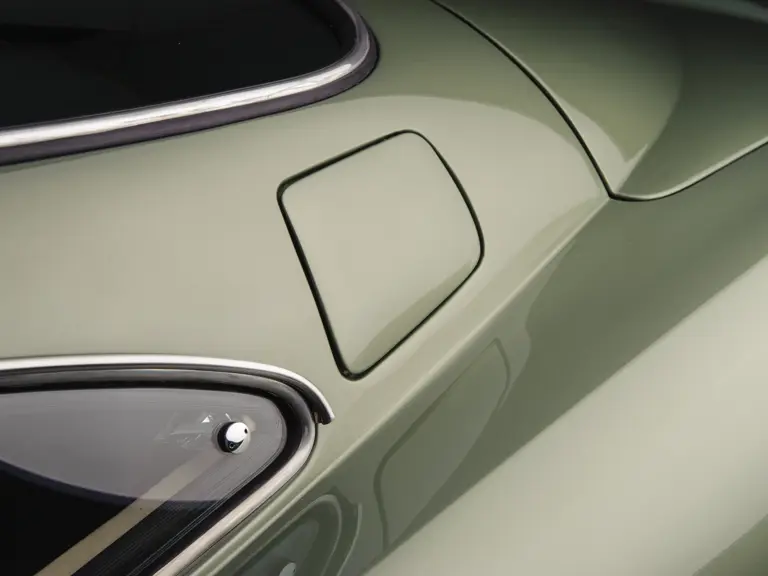
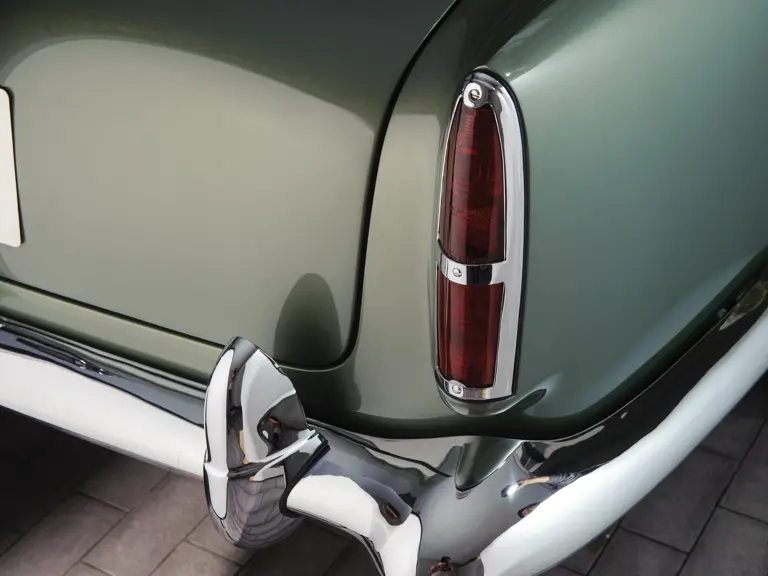
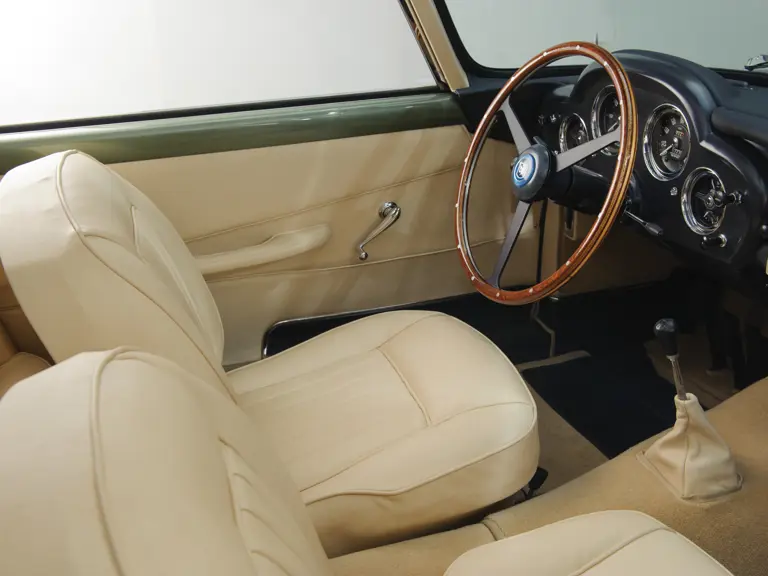
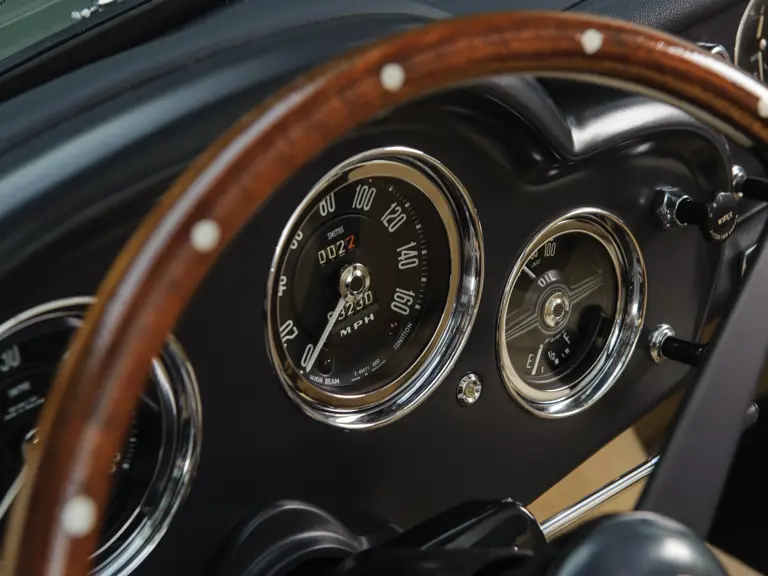

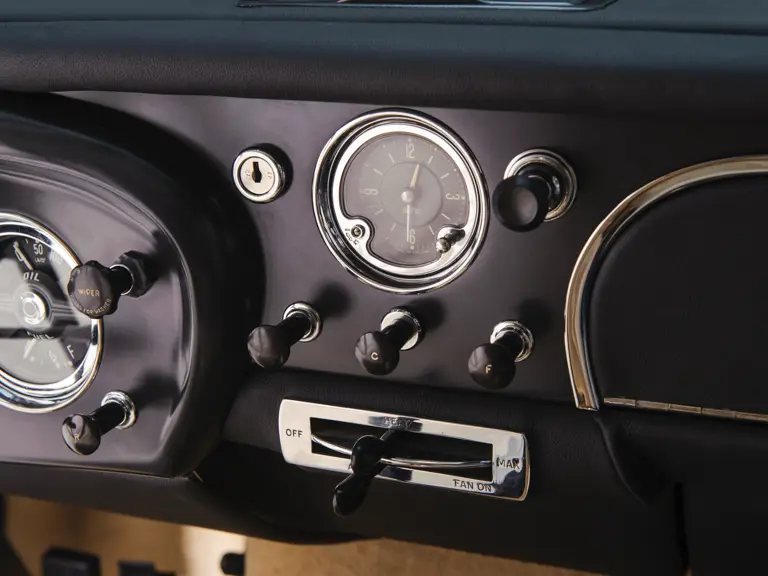
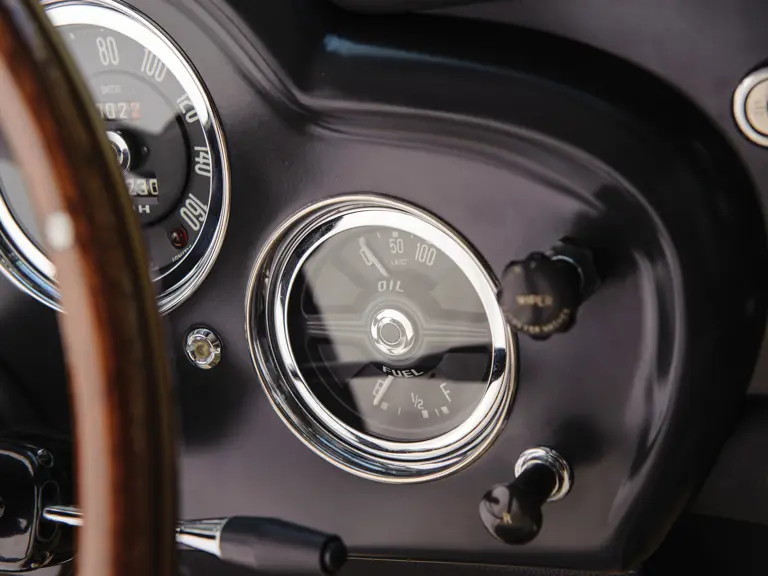
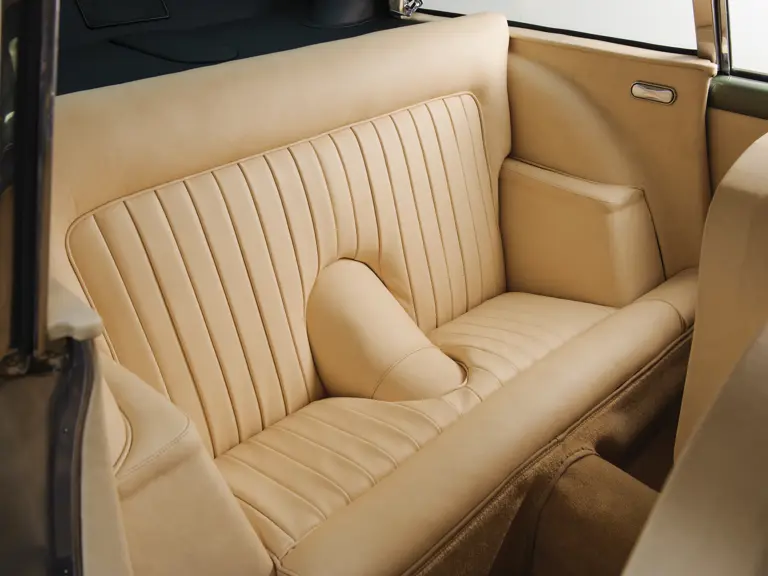

 | Paris, France
| Paris, France
